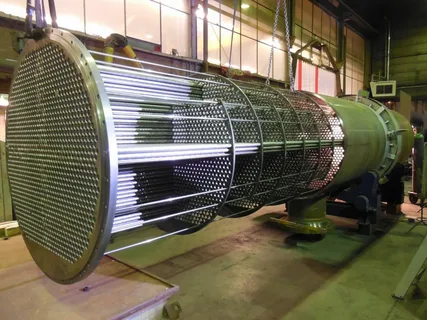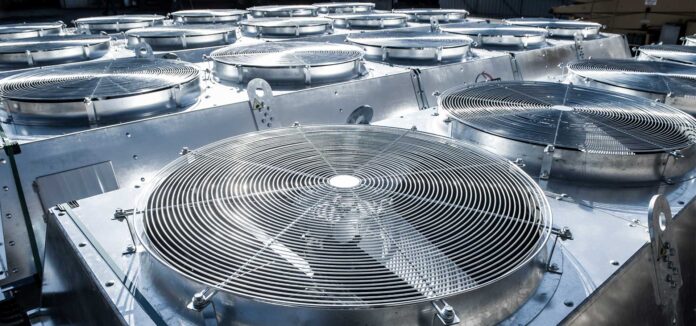Heat exchanger air to air is an efficient and economical way to transfer heat between two separate air streams. This heat transfer system can be used to warm a space, cool a space, or help maintain a comfortable temperature in a room. Heat exchanger air-to-air can be especially helpful in areas where traditional heating and cooling systems are cost-prohibitive or inefficient. In this blog post, we will look at the benefits of using a heat exchanger air-to-air system and how it can help improve your home’s comfort and energy efficiency.
What Is A Whole House Air Exchanger?
A whole house air exchanger (also known as a heat recuperate or an HRV) is a device that helps to keep your indoor air clean and comfortable. It works by exchanging stale indoor air with fresh outdoor air while simultaneously recovering the energy from the stale air. This process helps maintain the desired temperature in your home while reducing the need for extra heating or cooling energy. The HRV is designed to remove moisture, dust, pollen, and other airborne pollutants while increasing ventilation and keeping indoor air at an optimum humidity level. Doing this improves the overall comfort of your home, reduces the risk of respiratory illnesses, and decreases the amount of dust in the air.
What Are The Benefits?
A whole-house air exchanger, also known as an HRV (Heat Recovery Ventilator) or an ERV (Energy Recovery Ventilator), is a device that helps to improve indoor air quality by exchanging the stale, polluted air inside your home with fresh, outdoor air. It works by drawing in outside air, filtering it and then heating it with the warmer air inside the house before releasing it into the living spaces. It allows for improved air circulation throughout the house while at the same time reducing energy costs.
The main benefit of having a whole-house air exchanger is that it helps to reduce energy costs associated with heating and cooling. Transferring heat from the warmer air inside the house to the cooler air outside, reduces the amount of energy needed to heat or cool the home and helps to maintain comfortable temperatures more efficiently. Additionally, these devices are designed to filter out pollutants and allergens from the incoming air, providing a healthier environment for all who inhabit the home. They also help maintain humidity levels, which can benefit those suffering from allergies or asthma.
How Do Small Hrv Units Work?
A small hrv unit is a heat exchanger designed to transfer heat from one air source to another. This process is often referred to as “air-to-air heat exchange” and is commonly used in homes and businesses to reduce energy costs. The unit is composed of two separate fans that push air through a set of fins or pipes located inside the exchanger. The hot air from one fan passes over the fins, transferring heat from the hot air to the cooler air from the other fan. The cooled air is circulated back into the living space or office, while the hot air is expelled outside.
Small hrv units are typically installed on the wall or ceiling and take up very little space. They are very efficient in transferring heat and can help reduce energy costs significantly. Furthermore, they are very quiet, so they won’t disturb occupants during operation. They also come in various sizes, so they can fit any space, regardless of size. Additionally, some models are equipped with automatic shutoff features that turn off the unit when not in use, which helps to conserve energy.
What Are The Types Of Heat Exchangers?
Heat exchangers are broadly classified as either counterflow or parallel flow. Counter-flow heat exchangers allow two fluids to pass each other in opposite directions. This heat exchanger is more efficient at transferring heat because the fluids are constantly in contact with each other.
 Parallel flow heat exchangers, also known as cross-flow heat exchangers, have the two fluids passing each other in the same direction. This type of heat exchanger is typically used for applications that require a high-pressure drop and have a low-temperature difference between the two fluids.
Parallel flow heat exchangers, also known as cross-flow heat exchangers, have the two fluids passing each other in the same direction. This type of heat exchanger is typically used for applications that require a high-pressure drop and have a low-temperature difference between the two fluids.
The most common type of heat exchanger used in residential applications is an air-to-air heat exchanger, also known as a heat recovery ventilator (HRV). This heat exchanger allows fresh outdoor air to enter your home while simultaneously removing stale indoor air. The HRV unit contains a heat exchange core that captures energy from the outgoing air and transfers it to the incoming air, which helps to maintain comfortable temperatures throughout your home while also helping to reduce energy consumption.
Heat exchangers can also be used in geothermal applications, such as ground-source and water-source heat pumps. These systems use underground piping to transfer energy from the ground or a body of water into a building. The pipes act as heat exchangers, transferring the stored energy from the earth or water into the building for heating or cooling purposes.
There are also plate heat exchangers, which use metal plates instead of coils to transfer energy between fluids. Plate heat exchangers are typically used in commercial and industrial applications where high pressures are needed, and fluids must be kept separate. They are also often used for applications requiring large amounts of heat transfer, such as for cooling and heating processes in chemical plants and food processing facilities.
How Much Does A Heat Exchanger Cost?
The cost of a heat exchanger can vary significantly depending on the size, complexity, and type you choose. Generally, a typical unit can range anywhere from $500 to upwards of $2,500. The exact price will depend on the brand and model and the installation costs associated with it.
For those looking to install a whole-house air exchanger, the cost is likely more expensive than an individual room or space air exchanger. For example, a whole-house air exchanger can cost differently, depending on the model and installation costs.
The cost of heat recuperate systems depends on how much heat is being recovered and whether or not you are using an existing furnace or boiler. If you are using an existing furnace or boiler, then the cost of the heat recuperate system will be lower. However, if you are installing a new system, the equipment and installation cost may be higher. Generally, a heat recuperate system can range high, depending on the size and type.
Overall, the cost of a heat exchanger will depend mainly on your specific needs and requirements. It’s essential to research and compare prices to get the best deal for your situation.
The Heat Recuperator Is Often Used In Conjunction With An Existing Furnace Or Boiler.
A heat recuperator is an effective and efficient way to improve the efficiency of your home’s heating system. They are air-to-air heat exchangers that are designed to pull air from the outside and use it to preheat the air that is entering the furnace or boiler. It helps reduce the energy required to warm the space and keeps your energy bills down.
The heat recuperate uses an insulated box and a fan to draw in outside air from the external environment. Inside, a heat exchanger core is made up of a series of small pipes filled with fluid. The incoming cold air passes through these tubes, exchanging heat with the heated fluid inside, thus increasing its temperature. This preheated air enters the furnace or boiler and helps raise the temperature faster, using less energy.
The heat-recuperator is typically used in conjunction with a thermostat-controlled system to maximize efficiency. The thermostat senses the temperature of the incoming air and will turn on the fan to pull in more outside air when necessary. It helps to keep your heating system running at optimal levels, reducing your energy costs.
Overall, a heat-recuperator can be a great addition to an existing furnace or boiler and help reduce energy bills. It is essential to consult a professional before installing one, as certain factors, such as size, location, and cost, needs to be considered. With the right setup, a heat-recuperator can be an excellent investment for any home.
Conclusion
Heat exchangers air-to-air can be a handy tool for anyone looking to save on energy costs, keep their home’s air clean and ensure the temperature inside their home is comfortable all year round. They are also relatively low-cost and can be used with existing furnaces or boilers, making them an excellent option for commercial and residential buildings. Heat exchangers air to air can help ensure your home stays comfortable and energy efficient all year round, no matter what type of climate you live in.
Related Websites
Articles on Blogseu
Articles on Blogspeoples
Articles on Thebigblogtheory
Articles on Allcityforums

